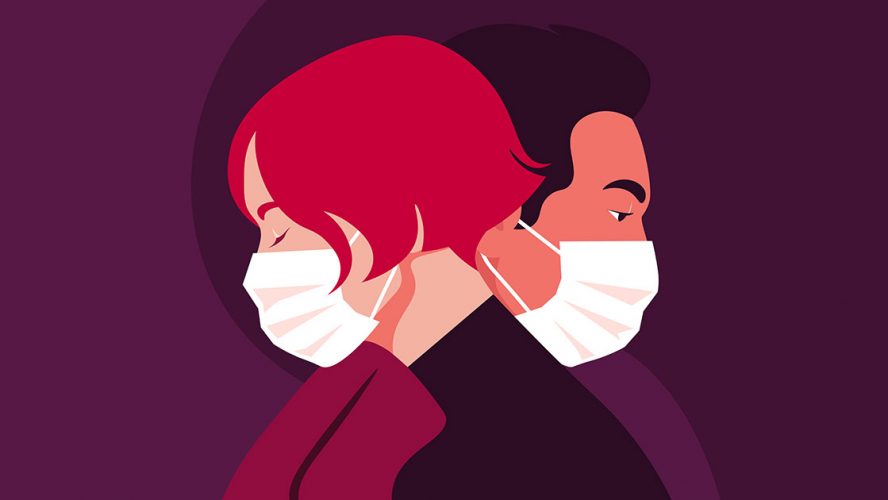Though both are two different types of diseases, HIV has informed healthcare’s handling of the ongoing COVID-19 pandemic.
I can still recall my first arm’s-length introduction to HIV in 1981. When I was 10 years old, the introduction came to me, like so many others in this country, neatly wrapped up inside a succinct, two-minute blurb on the evening news.
I remember sitting atop the stairs of my childhood home when reports of a deadly plague began rocking the world. I remember hearing the sound of unfamiliar words like “lesions,” “pneumocystis,” “GRID” (for gay-related immunodeficiency), and “AIDS.”
Slowly, we learned about its disproportionate impact across other historically underserved communities and the stigma’s burden on health outcomes for generations to come.
Thirty-nine years later, here we are again: in an eerily familiar place, learning to live with (and trying to eliminate) another “novel” pandemic, COVID-19. But this time, we’re armed with all the lessons we’d learned from HIV (and more recently, viral hepatitis).
Parallel lives
And though the transmission routes of HIV and COVID-19 may differ, the two diseases have laid parallel tracks in terms of their population-level health impacts and lives claimed. But our prevention, care, and treatment assessment remain quite familiar.
As with HIV, COVID-19 once again teaches us how unbiased, disease-interruption methods are critically necessary for both individuals and shared value systems; how enhanced access to resources means better health outcomes for everyone, especially among seniors and those with underlying, chronic health conditions; and, how testing, as part of any routine standard of care, helps normalize and de-stigmatize our (often chronic) conditions, making it easier to reduce outbreaks, get earlier diagnoses, and seek treatment.
And as we age with HIV (until there’s a cure) and regrettably COVID-19 (until there’s a proven vaccine), both pandemics continue to bolster the argument for an expanded (ACA-style) engagement in care coordination, psychosocial services, insurance navigation, and vaccine deployment strategies.
HealthHIV’s State of Aging with HIV national survey illuminated these concerns and the need for better coordination of care, especially when dealing with pandemics. We’ve learned a lot about how to address COVID-19 through the time we’ve spent making HIV a manageable condition (for most). It’s now time to re-double our efforts to get rid of them both, once and for all.

